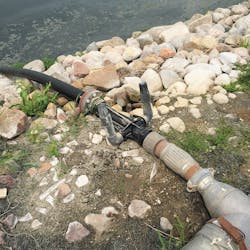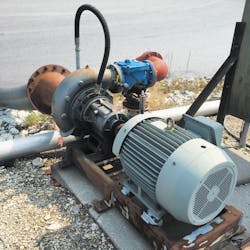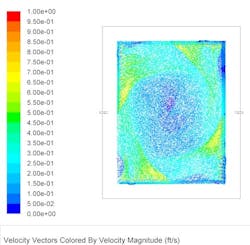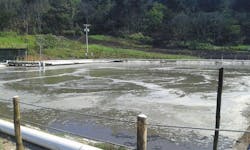Wastewater Lagoons & Aroma
About the author:
Jim Lauria is vice president of sales & marketing for Mazzei Injector. Lauria can be reached at [email protected].
While a pleasant aroma enhances the consumption experience of food and beverages, odors around wastewater lagoons at food and beverage processing plants can be a different story.
Maintaining aerobic conditions in wastewater lagoons at processing facilities can be a vital element in minimizing odor and reducing biological oxygen demand (BOD).
Lagoons can be a challenge to aerate from the perspective of efficacy—overcoming the challenge of getting air deep enough into the water and ensuring that it is dissolved into solution. Professionals have relied on pushing air from the surface into the lagoon.
Surface systems typically rely on surface aerators, also known as “splashers,” or high-horsepower systems that try to push air bubbles down into the wastewater, fighting the natural tendency of air bubbles to float toward the surface. Releasing air into the bottom of the lagoon so it bubbles up through the lagoon’s profile has proven to be more efficient and effective than either of the surface approaches.
Greater Solubility Potential
The solubility potential of air in water increases under higher pressure. As a result, it is more effective to inject air under the pressure naturally provided by the water column than it is to try to push atmospheric air into the upper few feet of the lagoon.
When the manager of a 30 million gal wastewater lagoon at an American food processing plant replaced his company’s 16 surface aerators—each with its own 25-hp drive motor—with a system of 40-hp-pumps, submerged nozzles and venturi injectors, the system’s energy costs dropped by more than 30%.
The system, which has been in place for more than a decade, directs a sidestream of wastewater through Venturi injectors manufactured by the Mazzei Injector Co. As the wastewater passes through the injector, it undergoes the Venturi effect, creating a zone of low pressure at the injector’s suction port.
That low pressure flow draws air into the injector from outside, mixing and shearing it as it blends with the wastewater to form an air and liquid mixture. The aerated solution is pumped through pipes to mass transfer multiplier (MTM) nozzles, which further shear and mix the gas fraction of the flow as it enters the bottom of the lagoon.
The result is a cloud of bubbles, swirling and mixing at a speed of 25 ft per second. The shearing action is important, especially in a wastewater environment, as it disrupts the coating action of greases, surfactants and grime that can interfere with transfer across the gas and water interface.
Using computational fluid dynamics (CFD) modeling, designers can optimize the configuration of the system—from the horsepower of the pumps to the size and placement of the injectors and nozzles—to ensure proper mixing and circulation within the lagoon.
Safer & Easier to Maintain
The manager of the food processing plant was eager to free his crews from the dangerous job of maintaining surface aerators. A crew member had fallen out of a maintenance boat while working on an aerator, creating a potentially deadly situation. The fact that workers had to maintain 16 separate drive motors in the surface aeration system, as well as the blades and drive trains for each unit, added to its expense.
By contrast, the Venturi system is driven by pump stations that are situated on dry ground, minimizing the need for workers to maintain machinery in a pathogen-rich environment of splashing wastewater. Those pump stations also contain the only moving parts in the system, reducing maintenance.
Reducing BOD
Odor control requires just enough oxygen to inhibit the activity of anaerobic bacteria that form hydrogen sulfide gas. To create the conditions that reduce biological oxygen demand, more aeration is required. When using venturi injectors and MTM nozzles, even high levels of air transfer are possible with minimal energy and infrastructure.
In Central America, a coffee processing facility maintains a 1.2 million gal lagoon fed by 1,000 cu meters per day of effluent water during the harvest season. Plant management selected a Venturi/MTM system because of the ease and speed of installation. With 210 meters of PVC pipe, the facility was up and running quickly.
The entire system operates with just a pair of small pumps. Each pump pushes a sidestream through Mazzei 4091 Venturi injectors at a pressure of approximately 15 psi. In turn, each injector discharges aerated water through a pair of 4-in. MTM nozzles positioned at the bottom of the lagoon. The system reduces BOD from influent levels of more than 12,000 ppm to less than 9,000 ppm.
From the lagoon, the treated wastewater is transferred to a settling pond, where total suspended solids fall from influent levels of 825 ppm to 128 ppm, which is clean enough to run through an irrigation system that sustains the company’s coffee plantation.
More contact, more mixing, less energy, and less moving parts are making Venturi systems a powerful force in wastewater treatment systems in the food and beverage industry, whether the goal is odor control or more intensive aeration to reduce BOD.



